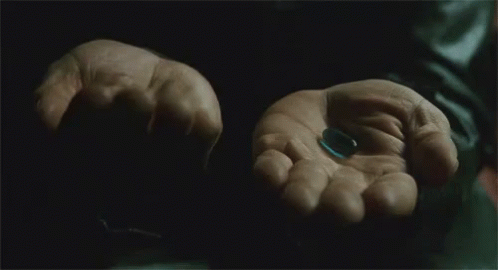La La Land nos muestra una historia de 2 artistas que, en tiempos contemporáneos, se encuentran en la ciudad de las estrellas buscando convertirse en unas. El personaje de Mia es una actriz que, después de muchos intentos, sigue buscando la forma de conseguir un papel para cualquier obra que se le presente. Sebastian es un jazzista clásico que está herido a causa de la lenta muerte de su género musical. La película está tomada en CinemaScope, tecnología utilizada para grabar los musicales de los años 50s y cuenta con un estilo obviamente inspirado por Lubezki y sus tomas largas que te sumergen en la cinta. Y claro, cuenta con un guión romántico y comédico que hace click con todas las demás características de La La Land.
Al ser clasificado ante la sociedad como un "fanático de La La Land", he recibido todo el criticismo (bueno y malo) de la película, y me entristece que, muchas veces, la razón que eligen para decidir que la cinta es mala sea "No me gustó". Voy a recorrer algunos pensamientos que me han compartido amigos y conocidos al respecto de La La Land y daré mi opinión al respecto de cada una después.
El guión es bastante sencillo. Es cierto. No trata con temas complejos como Moonlight, ni con reflexiones profundas como Nocturnal Animals. La idea es bastante concisa y lineal. ¿Esto es malo? Yo creo que no. Películas como Titanic y Casablanca cuentan con guiones que no son complejos y aún así son interesantes; vaya, The Avengers es una de las historias más lineales que conozco y jamás me aburro de verla. Quizás el guión de La La Land parezca simple, pero ¡La manera en la que lo llevan a la pantalla es impresionante! Si te fijas bien (y yo noté esto gracias a la plática con un amigo) puedes ver que en cada escena hay algún objeto azul, amarillo, rojo y verde. Los vestidos de Mia se van oscureciendo conforme pasa la historia y en el montaje en el que se enamoran, el cielo brilla en morado (combinación de 2 colores).
No es inclusiva, sólo hay actores blancos. Hay dos razones para que esto sea "un argumento". Si lo que en realidad me quisieron decir es que "Todos los actores principales (menos John Legend) son blancos", es porque la cinta lo requería. La La Land no guarda secretos en cuanto a las referencias a los musicales clásicos del cine. Toda la cinta tiene pequeños mensajes ocultos que quieren mostrar su amor a películas como Singing In The Rain y Rebel Without A Cause. Al querer ser una oda, respetó todas las reglas que estos musicales impusieron implícitamente, y aún así logró ser inclusiva en comparación a las cintas anteriormente menionadas.
No tiene final feliz. Hay dos respuestas correctas para esta afirmación. 1. Claro que sí tiene. 2. De eso se trataba. Mia y Sebastian al final (SPOILER ALERT) consiguen alcanzar sus sueños, y son felices con ello, cada uno a su manera. Claro, no es el final romántico que el trailer y después el epílogo te logran vender, pero eso es lo especial de La La Land. Damien Chazelle te muestra cómo hubiera sido la película si hubiera existido en el siglo pasado, y el giro que él le otorgo.
No es realista. Pues, no. De eso se trata. La primer toma es cómo todos se ponen a bailar y cantar en la avenida más transitada de los Estados Unidos. Es una forma cortés de pedirte que te desconectes de la realidad por un rato y sólo disfrutes la película. Deja de pensar en tu realidad por un momento y disfruta.
La verdad no sé, sólo no me gustó. Este argumento es terrible. De seguro te encantó Manchester By The Sea, oh espera, estoy bastante seguro de que no la has visto. (Lo siento, me pasé de sass). Está bien que no te haya gustado, pero eso no rige si la película es buena o mala, a mi no me gustó Hacksaw Ridge y puedo afirmar que la película es buena. El ser una buena película no siempre está conectada con los gustos personales de todo el mundo.
¿Qué pienso de lo que sucedió en los Oscar Awards? Más que nada estoy triste porque el equipo de Moonlight no tuvo su momento dorado, en el que todos los voltearon a ver diciendo "Wow, Moonlight, ahora sí tengo que verla". Me entristece que esa situación sólo les afecta a todos negativamente y yo espero que al menos sirva para que todos vayan a ver ambas películas. Merecen amor y respeto porque son increíbles.
Disculpen mi La La Rant, pero desde que empezó el backlash de la película, ésta ha recibido más fuertes críticas de lo que merece y se está perdiendo el cuadro completo. No podemos negar que La La Land es una gran película que va a trascender de 2016 y va a ser observada como camino a seguir por muchos más. Me encuentro a la espera de la siguiente obra de Damien y nunca se les olvide, si quieren hablar de esta película (o cualquier otra que haya visto), pueden hacerlo conmigo. Es muy interesante oír puntos de vista fundamentados diferentes al mío. Gracias por soportar el berrinche.





